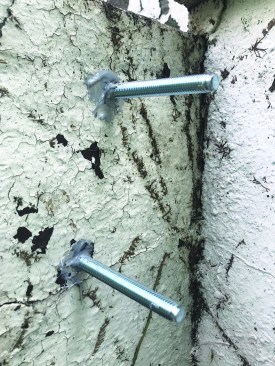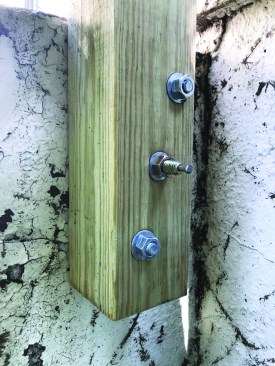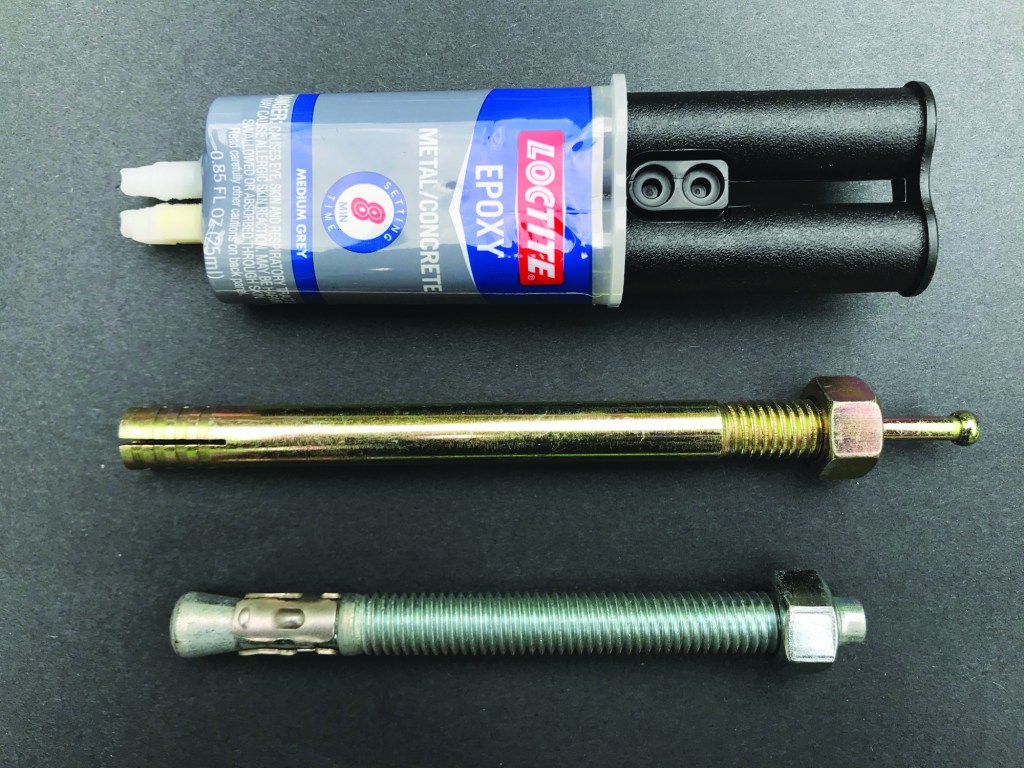Q: How do I anchor a wood post to old poured-concrete porch steps?
A: Don Boivin, a contractor and craftsman from Hyannis, Mass., responds: There are many options for anchoring a post to existing concrete, but the trick for choosing the right anchor is gauging the condition of the concrete. If the concrete is older and unstable, some anchors might be more effective than others. Unfortunately, I know of no good, inexpensive way for a remodeler to test the strength of concrete.
Be aware that by code, guardrails are required when walking surfaces are 30 inches or more above grade, and the posts must be able to resist 200 pounds of lateral pressure. In such cases, it is best to consult an engineer, but even then, it would be difficult to gauge the integrity of the concrete without some method of testing.
Recently, I was able to try several different anchors while installing some posts on a set of old concrete steps. The highest walking surface of these concrete steps was less than 30 inches above grade, so code regulations did not apply.
I could not use surface-mounted post anchors (on the tread surface of the step) because the bolts would have been too close to the edge of the concrete and the width of the steps would have been compromised. Instead, I used the anchors to attach the 4×4 treated posts directly to the sides of the steps, where there was more concrete to bite into.
The first anchors I tried were hefty 1/2-inch-by-6-inch wedge anchors—two for each post. Wedge anchors fit into drilled holes, and tightening a nut on one end of the anchor forces a sleeve on the other end to expand against the sides of the hole, securing the bolt—and the post—in place.
I always try to keep fasteners safely away from the nose of the step, which is the weakest point of any step—wood or concrete. An easy way to locate and drill the holes for the anchors is clamping a short piece of 2×4 to the side of the 4×4 post to hold it temporarily at the desired height. After marking on the post where I want the bolts, I drill holes through the posts.
Then I set the post back into place, holding it plumb, and run a masonry bit through the holes in the post to mark the anchor locations in the concrete. Then it’s just a matter of drilling the right diameter and depth holes at those locations. Always be sure to clean the dust out of the holes before inserting the anchors.

Bolts epoxied into concrete

Post attached with epoxied bolts and a hammer-drive anchor
In this case, I discovered that the concrete was not solid enough for the anchors to tighten in the holes. My next option was anchoring the bolts in epoxy made specifically for concrete. I pushed the epoxy into the holes, bedded the bolts in the mix, and left it to set overnight. Epoxy forms a tenacious anchor for the bolts, and it worked for the most part. But I was still not totally satisfied with one of the posts, so I installed an additional hammer-drive anchor. Pounding on the center pin of the anchor causes the other end of the anchor to expand and wedge itself against the sides of the hole. For this project, the hammer-drive anchor solved the problem.
